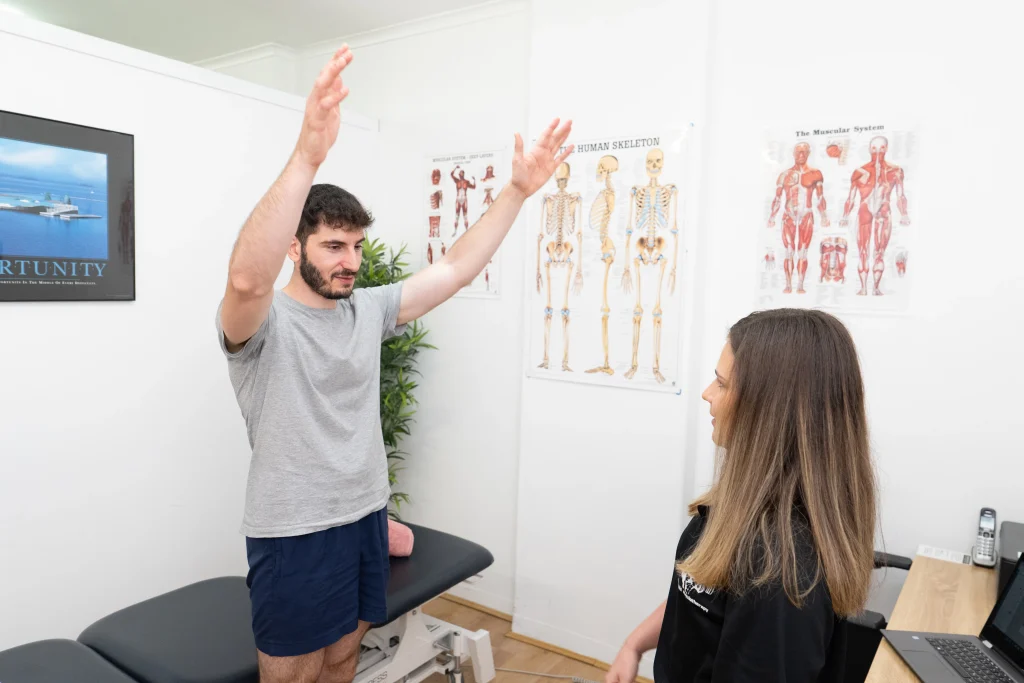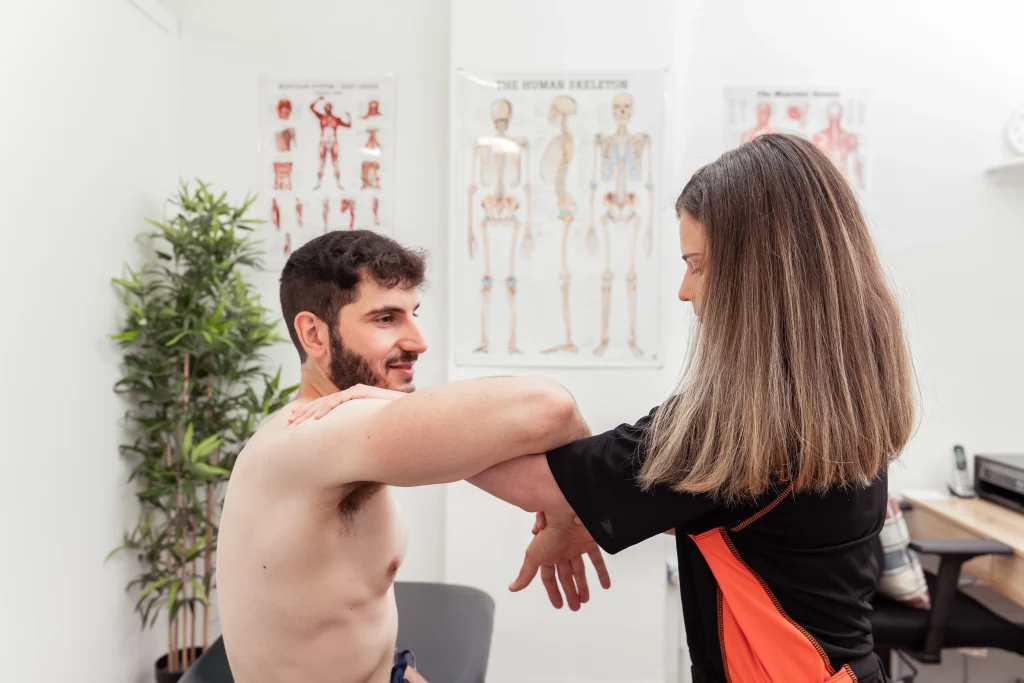
When most people think of shoulder training, they picture big deltoids and overhead presses. For long-term shoulder health and injury prevention, however, the real stabilisers are the rotator cuff muscles.
These four small muscles—supraspinatus, infraspinatus, teres minor, and subscapularis—act as dynamic stabilisers. They don’t create large movements like the deltoids, but they keep the humeral head centred in the shoulder socket during lifting, reaching, or throwing.
If these muscles aren’t working well together, the shoulder can become painful, unstable, or more prone to injury, particularly for athletes or anyone who frequently performs overhead or repetitive arm movements.
Why Focus on the Rotator Cuff?

- Protect the joint: Strong cuff muscles reduce the risk of impingement, tendonitis, or dislocations.
- Efficient movement: A stable shoulder allows larger muscles to generate force safely.
- Postural support: Helps maintain proper shoulder blade positioning and can improve rounded shoulders.
- Performance: Essential for overhead and throwing movements in sport or daily activities.
Principles of Rotator Cuff Training
- Low load, high control: Use light resistance and focus on technique.
- Slow and controlled: Avoid momentum and ensure proper muscle activation.
- Train through different angles: Include internal and external rotation, as well as arm elevation.
- Integrate with scapular work: Combine with exercises that stabilise the shoulder blade.
Simple Home-Based Exercises
Table-Supported Shoulder External Rotation
Sit or stand beside a table and rest your elbow on it for support. Hold a light weight or resistance band, and rotate your forearm outward slowly, keeping the elbow tucked in. Muscles targeted: Shoulder external rotators (infraspinatus, teres minor).
Side-Lying Shoulder Internal Rotation
Lie on your side with the working arm on top, elbow bent at 90°. Hold a light weight or band and rotate the forearm inward across your body. Muscles targeted: Shoulder internal rotators (subscapularis).
Dynamic Stability Drill (Ball on Wall)
Place your hand on a small ball against a wall. Apply gentle pressure while tracing small circles or letters. Purpose: Activates the rotator cuff while improving scapular control and proprioception.
Progression & Integration
Start with 2–3 sets of 12–15 repetitions using light resistance. Progress by increasing time under tension or adding complexity rather than heavier weights. These exercises can be included in warm-ups for sports, overhead activity, or general upper-body workouts. For full shoulder stability, combine them with scapular strengthening exercises such as rows, wall slides, or serratus punches.
If you need help strengthening your rotator cuff and would like a tailored treatment plan suited to your shoulder injury book a consultation with our experienced physiotherapists today!

